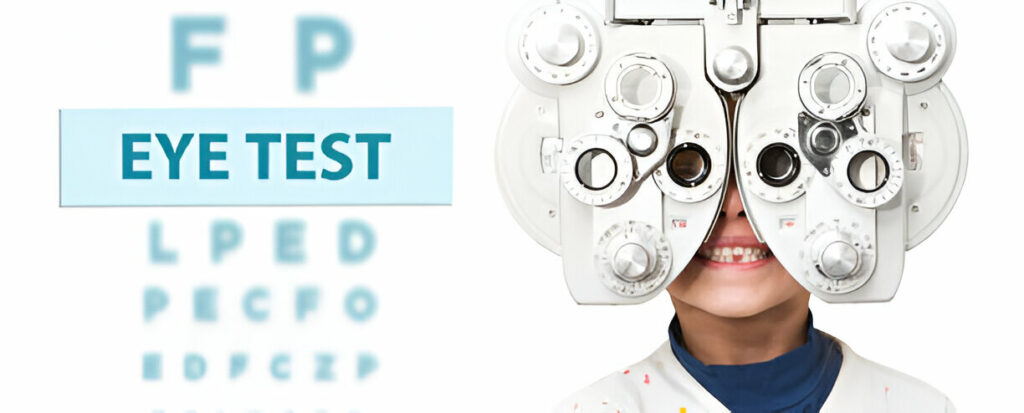The eye’s lens must be clear to allow light to pass through it and focus better on the retina. A cataract is a clouding of the eye’s lens that hinders light from focusing on the retina, causing faded colors, blurry vision, and poor eyesight at night. Cataract surgery replaces the clouded lens with a clear, artificial intraocular lens for better vision. Here are five main types of cataracts and how an eye doctor diagnoses and treats them:
1. Age-Related Cataracts
As people age, the proteins in their eyes’ lenses may start breaking down and clumping together. This causes the lenses to become clouded, making it challenging for light to pass through and reach the retina. Cataracts that occur gradually due to aging are known as age-related cataracts and are the most common type. In addition to aging, some other factors can increase your risk of age-related cataracts, including smoking, excessive alcohol intake, diabetes, eye injuries, and a family history of this condition. If you’re over the age of 40 and have been experiencing blurry vision, an eye doctor will evaluate your eyes, determine whether you have cataracts, and recommend cataract surgery, if necessary.
2. Secondary Cataracts
Secondary cataracts are a complication of cataract surgery and occur when the lens capsule starts clouding. The lens capsule surrounds your lens and consists of cells and other natural materials. During surgery, the surgeon removes the clouded lens and leaves behind the capsule. After getting your intraocular lens, the capsule itself may start developing cloudy patches as time passes. This process is called posterior capsular opacification and causes blurry vision and sensitivity to glare. Eye doctors use YAG laser capsulotomy to create an opening on the clouded capsule to allow light to pass through. Visit an eye professional if you have had cataract surgery and are experiencing blurred vision.
3. Traumatic Cataracts
Traumatic cataracts occur when one or both eyes experience trauma. Trauma, whether blunt or penetrating, disrupts the arrangement of the lens fibers. These fibers may clump together over time and form a cataract. If you suspect you have traumatic cataracts, especially if you regularly engage in activities with risks of trauma to the eyes, visit an eye doctor for a diagnosis. They can determine the presence of traumatic cataracts and recommend you to a surgeon. While treatment restores clear vision, you must protect your eyes from future trauma. Wear protective eyewear while participating in activities that put your eyes at risk, or completely avoid actions that may cause eye trauma.
4. Congenital Cataracts
While rare, cataracts can occur in babies and young children. These are known as congenital or pediatric cataracts and develop primarily due to genetics. They may also occur due to childhood illness, injury, or infections during pregnancy, such as rubella. Symptoms for congenital cataracts are similar to those in adults: children may see circles around lights, experience blurry vision, and have uncontrolled eye movements. If the cataracts are not severe, they may only require monitoring to verify that they do not significantly affect the child’s vision. Cataract surgery could be necessary if the cataracts are large and interfering with the child’s vision.
5. Radiation-Induced Cataracts
The eye’s lens is a radiosensitive tissue. Radiation-induced cataracts occur when the eyes get exposed to high amounts of ionizing radiation. The severity of cataracts depends on the radiation dosage. If the doses are low, cataracts may not develop. If the doses are high and directed toward the eyes, cataracts could form over time. Since radiation therapy is a common treatment for cancer, individuals who have undergone this therapy should schedule regular eye exams. The sun’s ultraviolet rays also increase the risk of cataract development, so wear sunglasses if you spend a lot of time outdoors.
Cataract Diagnosis
Eye doctors use a comprehensive eye exam to detect cataracts, which involves an evaluation of your symptoms, a slit lamp exam, and a visual acuity test. Cataract symptoms your eye doctor looks for are blurred vision, halos, light sensitivity, trouble seeing at night, and faded colors. If your vision prescription changes frequently, this may also be an indication of cataract development.
A slit lamp is a special magnifying microscope that doctors use to examine the eye’s internal structures. It helps them quickly identify any abnormalities, including cataracts. A visual acuity test determines how well you can see without your glasses or contacts. The doctor tests each eye’s ability to read letters and numbers of different sizes on a chart. This helps them determine how cataracts are affecting your vision.
Cataract Treatment
Cataract surgery is an effective treatment for cataracts. It involves removing the clouded lens and replacing it with a clear, artificial intraocular lens. The eye surgeon starts by applying ultrasound energy to break down the clouded lens, a procedure known as phacoemulsification.
They remove the broken-down lens material and place an artificial intraocular lens in the area as a replacement. Since the replacement lens is clear, it allows light to pass through it and focus on the retina, restoring clear vision. Cataract surgery is a minimally invasive outpatient procedure, and patients usually go home the same day.
Visit an Eye Specialist for Cataract Surgery
Cataracts can significantly affect your vision, hindering activities like reading, writing, watching television, and driving. If you suspect you have cataracts, visit an eye specialist for a comprehensive eye exam. The exam will reveal the presence of cataracts, and your specialist may recommend surgery to replace the clouded lens. Cataract surgery is safe and effective, and it can help you achieve clearer vision and improve your quality of life. Contact an eye specialist today for an eye exam and diagnosis.
Also, read –



